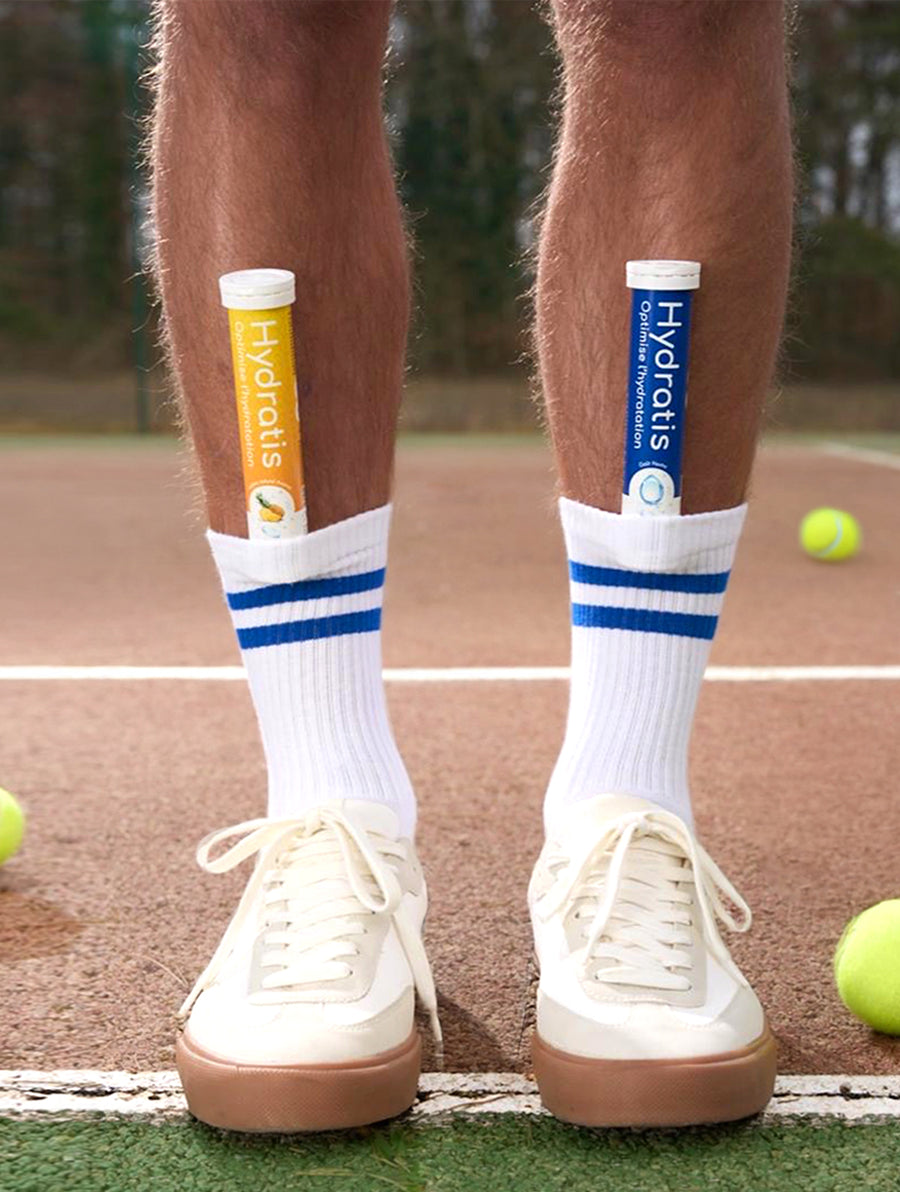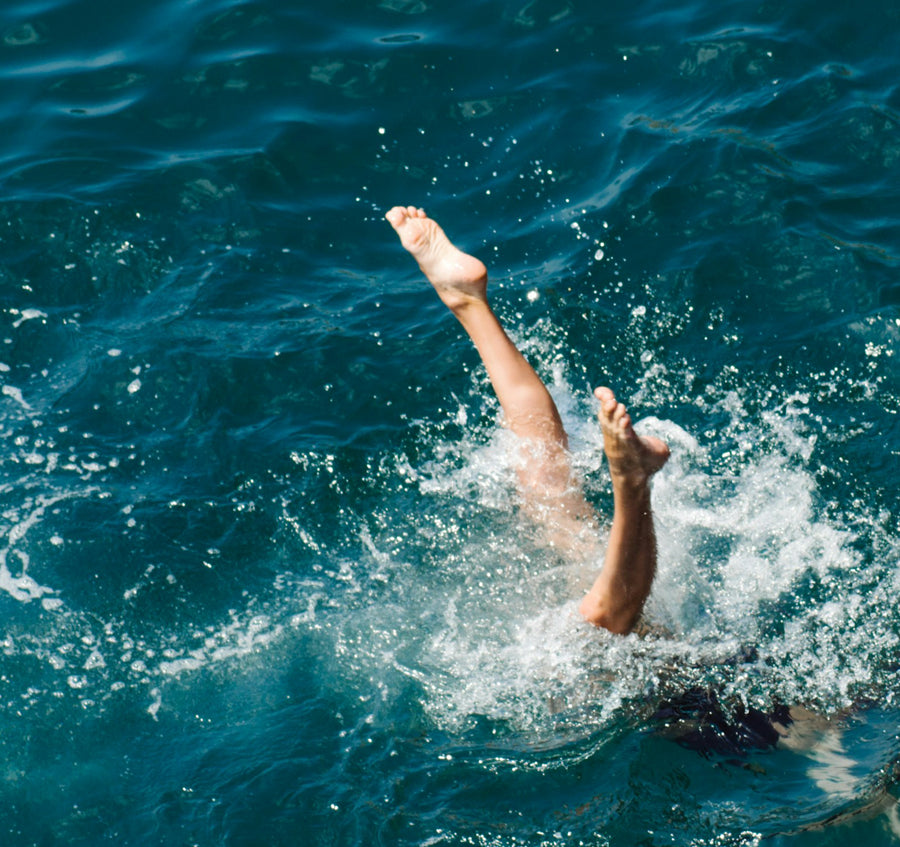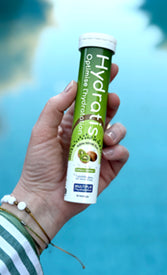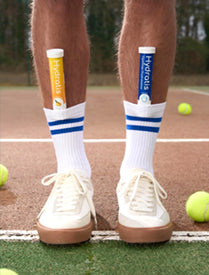Do you suffer from chronic dehydration?
Dehydration is not always a simple passing episode, linked to intense exertion or a day of high heat . It can set in deceptively and persistently.
When your daily fluid intake fails to compensate for your fluid losses, you slide towards chronic dehydration . Persistent fatigue , frequent headaches , tight skin, dark urine : these are all signals your body sends to remind you of one simple thing: you need more water.
In this article, we explain this phenomenon, how to recognize the symptoms, adjust your intake and adopt sustainable hydration habits.
What is chronic dehydration?
Definition and symptoms
Dehydration corresponds to a water balance imbalance Your intake (drinks and food) does not compensate for your output (urine, perspiration, respiration, feces, fever). This is also referred to as a fluid deficit .
The causes are multiple: insufficient water intake , increased losses , or a deficiency in mineral salts, otherwise known as electrolytes .
In the body, water balance relies on a close relationship between water and electrolytes such as sodium , potassium , and chloride . Sodium, in particular, plays a central role in this dynamic: this mineral attracts water and controls its distribution between intra- and extracellular environments.
When you lose a large amount of sodium (through sweat, vomiting , or diarrhea ), the balance is disrupted. To compensate for this loss, water leaves the cells, and water reserves are gradually depleted.
If this imbalance persists without being corrected, chronic dehydration develops. It often manifests as general fatigue , headaches , dry mouth , cramps , constipation, and dark, scanty urine .
In severe cases, a sensation of cold in the extremities and a drop in blood pressure with dizziness when standing ( orthostatic hypotension ) may occur .
If you have been experiencing several of these symptoms for a while, you may be affected.
Difference with acute dehydration
Acute dehydration occurs suddenly in cases of illness, such as gastroenteritis , heatstroke, or prolonged exertion without drinking.
The signs are more obvious: intense thirst , extreme weakness , impaired cognitive function, tachycardia . It sometimes requires urgent medical attention.
Conversely, chronic dehydration is more insidious. You think you're "holding up," but your body is functioning at a reduced capacity. Your energy level drops, and you get used to feeling "a little less well" without directly linking it to a lack of water.
Ignoring these signals weakens your health and exposes you to potential medical complications (urinary tract infections, kidney stones, the onset of certain chronic diseases, etc.).
Why is water so important?
The function of water in the body
The body is composed of approximately 60% water (more in children, slightly less with age). But this body water is not simply "filler"; it transports oxygen and nutrients, participates in chemical reactions, lubricates joints, regulates temperature through perspiration, and also allows the kidneys to eliminate metabolic waste.
Simply put: without water, nothing functions properly. Indeed, the blood thickens, the heart works harder, the kidneys filter less effectively, the intestines slow down, and the brain loses performance. It's a domino effect that impacts the entire body.

Daily water losses
Even at rest, you eliminate water : by breathing (exhaled water vapor), by sweating (even without effort), by urinating and via feces.
Several factors can exacerbate these losses : heat, physical activity, illness, altitude, fever, dry air, wearing occlusive clothing, a very salty or very proteiny diet, as well as certain medications (e.g., diuretics).
Failing to compensate for them properly risks developing a permanent hydration problem.
How can you tell if you are dehydrated?
Common signs of water deprivation
Contrary to popular belief, thirst is not a good early indicator. By the time you feel thirsty, you are already dehydrated !
To detect dehydration as early as possible, it is therefore essential to pay attention to other signs. Here are some clues that should raise a red flag:
- Urine colour: light yellow is reassuring; dark and scanty urine indicates a lack of water.
- Weight: rapid weight loss (outside of dieting) often reflects water loss.
- General condition: unexplained fatigue, headaches, irritability, decreased alertness.
- Skin and mucous membranes : dry mouth, skin that wrinkles when pinched (slow return of the skin fold).
- Cardiovascular system: dizziness upon standing, palpitations, unusual shortness of breath during exertion.
Symptoms of chronic dehydration
When dehydration persists for several weeks, other more serious problems can arise.
You can then observe:
- recurrent constipation;
- muscle cramps;
- more frequent urinary tract infections;
- kidney stones in predisposed individuals;
- a decline in cognitive performance (memory, attention);
- drowsiness in the afternoon;
- a dull complexion.
If you suffer from a chronic illness such as diabetes or if you work in a hot environment, you must be extra vigilant. The same applies if you belong to a high-risk population— older people , children, pregnant or breastfeeding women, athletes.
Red alert: Seek urgent medical attention if you experience the following signs: confusion, high fever, unusual drowsiness, very rapid pulse, very low blood pressure, no urine output for 8–12 hours, uncontrollable vomiting/diarrhea.
How much water should you drink?
The classic recommendations
On average, aim for 1.6 to 2 liters of fluids per day for an adult, in addition to the water from food. This amount is not set in stone: your actual needs vary from day to day.
The rule to remember: drink enough to maintain clear and regular urine (4–7 urinations/day).
Visit our website to take a hydration test and find our advice !
Factors influencing your water needs
- Temperature and humidity: the hotter and drier it is, the more you sweat.
- Physical activity: allow 0.4 to 0.8 L per hour of exertion, depending on your size and the heat.
- Altitude: breathing accelerates and losses increase.
- Diet: salt, protein and alcohol increase the needs.
- Physiology: pregnancy, breastfeeding, fever.
- Treatments/diseases: diuretics, diarrhea, poorly controlled diabetes, kidney disease.
Important: drinking more does not mean drinking without limit . Swallowing large quantities of pure water in a short time, without electrolytes, can cause hyponatremia (sodium diluted in the blood), with headaches, nausea, or even neurological disorders, hence the importance of a regular, fractionated and sometimes mineralized intake.
How to stay hydrated effectively?
Drink regularly
Don't wait until you're thirsty. Spread your fluid intake throughout the day, from waking up to going to bed:
- A glass on an empty stomach to "restart" the engine.
- A glass at each key moment (after washing, before going out, upon returning, before each meal, in the mid-afternoon).
- Keep a water bottle within reach: we drink more when water is easily accessible.
- When travelling: plan ahead and fill your water bottle before leaving, locate water points.
When and how to drink?
- Before, during, and after exercise: start hydrated, sip 2 to 3 sips every 10–15 minutes, then top up after exercise.
- In hot weather: increase your intake from the morning onwards, without waiting until you feel thirsty.
- With meals: water aids digestion.
In case of heavy losses (long session, salty perspiration leaving white marks, diarrhea/vomiting), increase your electrolyte intake.
In these situations, opt for a hydration-optimizing drink (water + mineral salts + glucose) rather than water alone. This will improve intestinal water absorption through sodium-glucose co-transport.
Other sources of hydration
A hydrating diet
Part of your water needs is met by food. Some foods are veritable water reservoirs.
Focus on:
- Fruits rich in water: watermelon, melon, citrus fruits, strawberries, peaches;
- raw or steamed vegetables: cucumbers, tomatoes, courgettes, salad;
- fresh dairy products: yogurts, soft cheeses, kefir;
- Compotes, soups and broths: simple and effective;
- Cooked grains (rice, pasta, quinoa): they absorb the cooking water.
A good meal represents several "invisible" glasses of water.
Alternative drinks
- Still or slightly salted water: the basis of your daily hydration.
- Mineral waters rich in sodium: useful after heavy sweating (to be alternated).
- Unsweetened herbal teas and infusions: they provide variety.
- Coffee and tea: they contribute to fluid balance. Consume in moderation if you experience palpitations, reflux, or sleep disturbances.
- Sugary drinks: these should be limited, as they provide calories and promote blood sugar spikes.
- Sports drinks: relevant in case of prolonged effort or high heat; superfluous at rest.
Preventing chronic dehydration: some practical tips
Adopt daily hydration habits
- Create habits: associate drinking a glass of water with actions you already do (brushing teeth, starting your shift, meetings, returning from breaks).
- Choose a nice container: a graduated water bottle will help you visualize your daily goal (e.g. 2 refills for 1.5–2 L).
- Monitor your urine: aim for a light yellow color and a regular frequency. This is the simplest, most immediate, and most reliable indicator on a daily basis.
- Add flavoring: citrus slices, mint, ginger, cucumber, cinnamon stick.
- Divide your intake: if your stomach "splashes", switch to small, frequent sips.
- Anticipate risky days: heat, travel, long meetings, wearing a mask, dry air-conditioned environment; be extra vigilant.
- Remain objective: don't chase a "quota" at all costs. The goal is to reach your own physiological comfort zone, not that of your neighbor.
Adapt hydration to specific situations

- Adjust your salt intake wisely: if you sweat a lot, a little more salt in your food (broth, mineral water) can be helpful. If you have high blood pressure or kidney disease, consult your doctor.
- Replenish your fluids after exercise: weigh yourself before and after a long workout. Each kilogram lost corresponds to approximately a 1-liter deficit: replenish this within 2 to 4 hours with water and electrolytes.
- Pay attention to subtle signs: recurring headaches, decreased concentration in the afternoon, constipation, nighttime cramps . Try prioritizing hydration for a week and note the difference.
- In case of digestive problems (vomiting/diarrhea): divide fluid intake into smaller portions, and favor rehydration solutions or slightly sweetened salt water. BUT consult a doctor if symptoms persist or worsen.
People with specific needs and medical monitoring
- Elderly people : the sensation of thirst is dulled; schedule timed intakes.
- Children : offer drinks often; a child absorbed in play "forgets".
- Pregnancy/breastfeeding : increased needs; keep water with you at all times.
- Diabetes: monitor blood glucose; hyperglycemia increases water loss (polyuria).
Get a health check-up if needed: your doctor may prescribe a blood ionogram (sodium, potassium, etc.) and a urine analysis to assess the situation, especially if you have associated pathologies.
Conclusion
As you can see, chronic dehydration is a serious problem that can affect your health, energy, and mental clarity.
The good news is that it can be corrected with simple actions: drink regularly, distribute intake, adapt according to heat and effort, listen to the body's signals, monitor the color of urine, enrich the plate with hydrating foods and use electrolytes when the situation requires it.
In just a few days, you will be able to see tangible improvements: fewer headaches, less fatigue, more supple skin, better concentration.
If you recognize yourself in the signs mentioned and significant symptoms persist (marked dizziness, palpitations, confusion, prolonged absence of urine, severe diarrhea/vomiting), do not wait: contact a healthcare professional for appropriate treatment.
Otherwise, start the good habits today: fill your water bottle, set goals for yourself, observe the clarity of your urine.
Bibliography
Taylor, K., & Tripathi, AK (2025, March 5). Adult dehydration. StatPearls - NCBI Bookshelf . https://www.ncbi.nlm.nih.gov/books/NBK555956/
Secher, M., & Ritz, P. (2012). Hydration and cognitive performance. The Journal of Nutrition, Health & Aging, 16 (7), 599–605.
https://doi.org/10.1007/s12603-012-0033-0
Lacey, J., Corbett, J., Forni, L., Hooper, L., Hughes, F., Minto, G., Moss, C., Price, S., Whyte, G., Woodcock, T., Mythen, M., & Montgomery, H. (2019). A multidisciplinary consensus on dehydration: Definitions, diagnostic methods and clinical implications. Annals of Medicine, 51 (3–4), 232–251.
https://doi.org/10.1080/07853890.2019.1628352
Parkinson, E., Hooper, L., Fynn, J., Howard Wilsher, S., Oladosu, T., Poland, F., Roberts, S., Van Hout, E., & Bunn, D. (2023). Low - intake dehydration prevalence in non - hospitalized older adults: Systematic review and meta - analysis. Clinical Nutrition, 42 (8), 1510–1520.
https://doi.org/10.1016/j.clnu.2023.06.010
Snell, P.G., Ward, R., Kandaswami, C., & Stohs, S.J. (2010). Comparative effects of selected non - caffeinated rehydration sports drinks on short - term performance following moderate dehydration. Journal of the International Society of Sports Nutrition, 7 (1), 28. https://doi.org/10.1186/1550-2783-7-28
Health insurance. Headache: definition and causes. (nd). ameli.fr | Insured. https://www.ameli.fr/assure/sante/themes/mal-tete/definition-causes
Thompson, AD, & Shea, MJ (2024, August 7). Orthostatic hypotension . MSD Manual Professional Edition.






